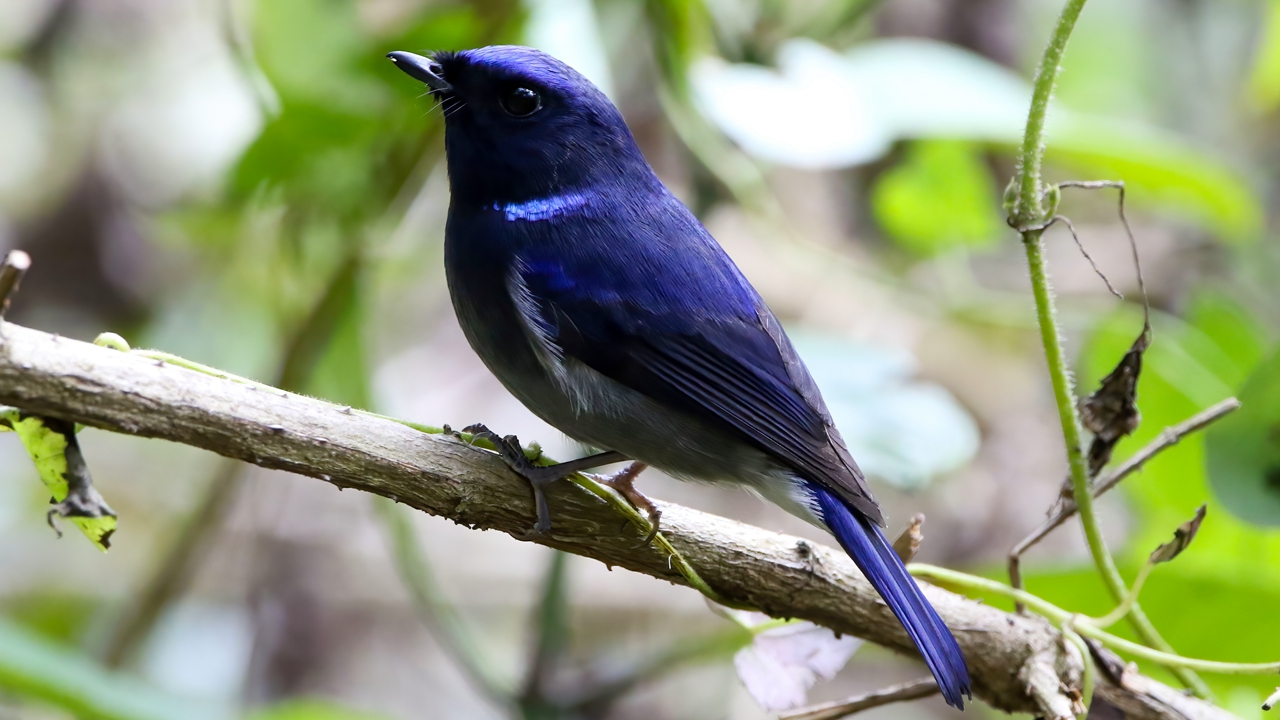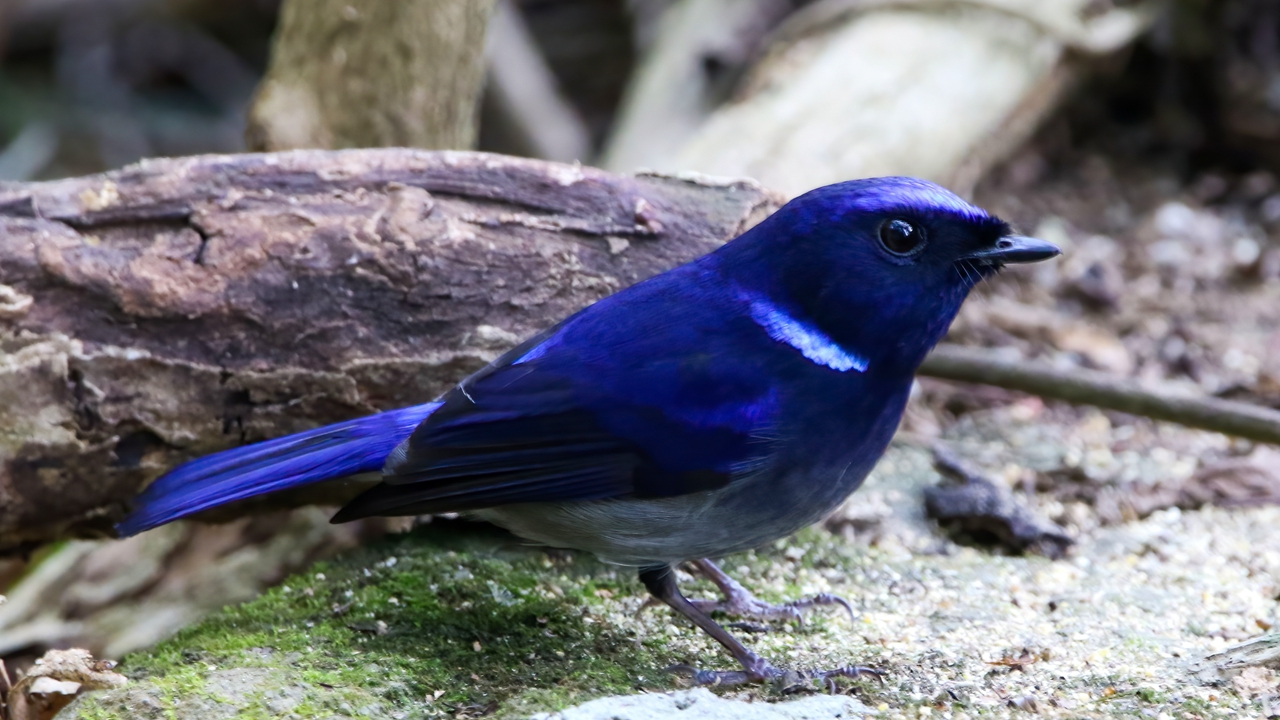The small niltava
Writer: Isaac Cohen | Editor: Zhang Chanwen | From: Shenzhen Daily

A small niltava is seen perched on a tree branch in the Wutong Mountain in Luohu District. Photos by Isaac Cohen
The small niltava
The small niltava (Niltava macgrigoriae), a captivating bird species found in Southeast Asian montane forests, enchants birders with its vibrant plumage and unique behavior.
小仙鹟是一种原产于亚洲东南部地区的雀形目鸟类,栖息于海拔较高的山地阔叶林。它们外表靓丽可爱,是倍受观鸟爱好者追捧的“明星鸟”。
The small-sized bird is approximately 14 centimeters in length. Males have a striking deep-blue plumage on the upperparts, contrasting beautifully with a paler coloration underbelly. Conversely, females are less flamboyant in appearance, with brownish upperparts and a soft orange underbelly. Both sexes wear a distinctive light blue patch on the neck, adding to their allure.
小仙鹟体型较小,体长约14厘米,雄鸟上体覆羽钴蓝色,腹部及尾下覆羽灰白色;雌鸟上体覆羽橄榄棕色,腹部及尾下覆羽浅橘棕色。无论雌雄,颈两侧皆具辉蓝色小块斑。
Thisagile and graceful bird often perches on exposed branches or in the understory of forests, flicking its wings and tail while displaying itspretty plumage. Males are particularly vocal, singing melodious songs to establish territories and attract mates.
小仙鹟性活泼,常停栖于树冠层中下部的侧枝或枝杈上观察四周,并有节奏地颤动翅膀及尾部。雄性擅鸣叫,繁殖期歌声婉转,借此吸引异性。

A small niltava is seen perched on a tree branch in the Wutong Mountain in Luohu District.
The small niltava primarily feeds on insects, including flies, ants, termites and caterpillars. It hunts for prey by sallying from a perch, capturing them midflight, or plucking them from foliage. Their diet also includes small fruits and berries.
蝇、蚁、白蚁、毛虫等昆虫占据了小仙鹟食谱的半壁江山。这些捕虫高手在停栖在树杈上的时候就开始观察昆虫的动向,待时机成熟便主动出击,或从半空中截获昆虫,或把它们从藏身的叶片上揪下来。不过,小仙鹟有时也会吃水果、浆果等植物性食物。
They typically breedfrom March to August. Males engage in courtship displays, showcasing their colorful plumage. Once a pair is formed, they construct their nest in the hollow of a tree or on a horizontal branch.The female lays a clutch of three to five eggs, which will hatch in about 12 days.Both parents diligently care for the eggs and hatchlings, taking turns feeding and protecting the nest. The young birds fledge after about another three weeks, eventually becoming independent and venturing into the forest.
小仙鹟每年3至8月繁殖。此时雄鸟的体色更加艳丽,并开始大肆求偶,卖力地向雌鸟证明自己。结为伉俪后寻址筑巢,巢多置于乔木树洞或枝桠上,雌鸟每窝产卵3至5枚,与雄鸟轮流孵化约12天后,雏鸟破壳。后期雏鸟的喂养和护卫亦由亲鸟共同完成,经过又三周的抚养,雏鸟羽翼渐丰,学会飞行,初步具备离巢独立生活的能力。
This insectivorous bird preys on insects, therefore helping control their populations and contributing to the balance of local ecosystems. By consuming fruits and berries, the small niltava aids in seed dispersal, promoting the growth and diversity of plant species.
小仙鹟捕食大量昆虫,因此能够有效地控制昆虫尤其是害虫的种群。它们也能帮助植物传播种子。
The presence of this blue beauty serves as an indicator of ecological integrity. Sensitive to environmental changes, such as habitat loss and degradation, the changing population of this species can act as a timely reminder of the need for conservation efforts.
此外,这些蓝色的小鸟还是重要的环境指示物种,它们能够敏锐地感知到所处生境发生的变化。一旦栖息在某地的小仙鹟种群迁离,说明当地发生了环境恶化及栖息地萎缩等问题,需要引起我们对于环境保护的重视。